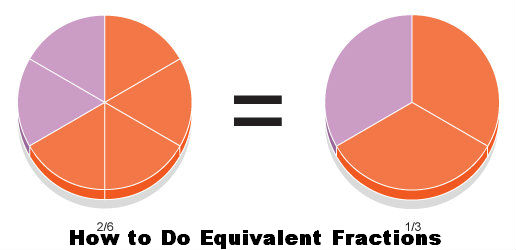How to Do Equivalent Fractions

While sitting in a Mathematics exam, you probably have to solve a number of sums involving small and long calculations. This often makes you think that the time allotted to you to complete the number of sums was not enough and you should have been given enough time. For you information, the time for the exam is always pre-calculated and you have to use methods that involve calculations that are less time consuming. Such situation can be there when you have a calculation involving Equivalent Fractions and you want to avoid long or the complete calculation. By applying a minor trick, you can avoid any long calculations thus solving the sum in the minimum possible time.
Instructions
-
1
Be aware of the operation you are applying on the fraction such as it could be addition, subtraction, multiplication and division.
-
2
For any operation between two given fractions, first look at the denominator of both of the fractions and see if they could be equalized by multiplying with a certain number.
2/4 + 11/32 ------------------------ 16/32 + 11/32 -
3
The reason why you do this is to avoid calculating the Least Common Multiple or LCM of the two given fractions. Equalizing their denominators will save you a lot of time in the following way.
2/4 + 11/32 ------------------------ 16/32 + 11/32
16/32 + 11/32 = 16+11/32 = 27/32 -
4
The same thing can be used if there is a fraction having numerator and denominator in three figures that may confuse you and seems greater than the one from which you have to subtract such as:
2/4 - 25/100 -
5
Now find a number that can reduce 100 to 4 and 25 to a number that is less than 2. As you will use 25 to reduce the numerator and denominator, it will be 1 and 4.
25/100 = 1/4 -
6
The apparently bigger fraction has now been reduced and it can now be seen that it is smaller than 2/4 so the subtraction can be done easily.
2/4 – 1/4 = 1/4 -
7
In the similar way, the equivalent fraction can be used to solve fractions that are even bigger by reducing both the numerator and the denominator to a smaller number.
4500/10000 = 45/100 = 9/20





